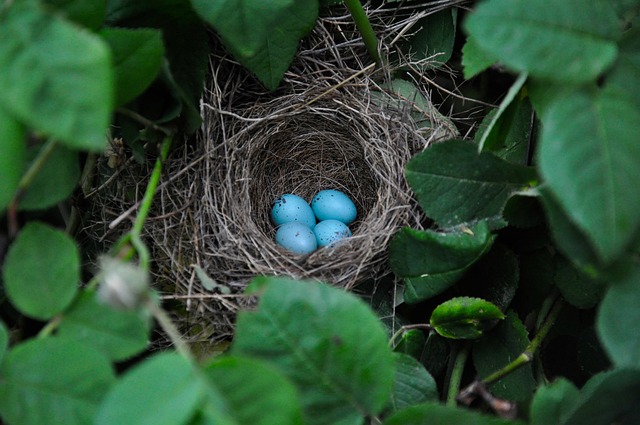Bird nesting sites vary between natural cavities and man-made structures like buildings and vehicles, with nests constructed from diverse materials ranging from simple piles to intricate woven designs. Professional inspections are crucial for humane bird nest removal in urban areas, where specialists use advanced techniques, tools, and planning to safely identify and remove nests, preserving habitats and minimizing disruption. Post-removal, maintaining the area around former nesting sites is vital for encouraging new bird habitats and conservation efforts.
Professional inspections play a vital role in identifying bird nesting sites, especially when aiming for humane bird nest removal. Understanding where and how birds build nests is crucial for their safety and habitat preservation. This article delves into the intricacies of bird nesting, from location and types to the techniques used by professionals for safe and efficient identification. We also explore post-inspection actions, ensuring humane removal while fostering a harmonious coexistence with these feathered inhabitants.
Understanding Bird Nesting Sites: Location and Types
Bird nesting sites are carefully chosen locations where birds create their homes, offering protection and a safe environment for raising their young. Understanding these sites is crucial for professionals engaged in humane bird nest removal services. These nests can be found in various locations, from tree cavities and branches to buildings, structures, and even vehicles. Some species prefer natural habitats like hollowed-out trees or rocky crevices, while others, particularly urban birds, have adapted to man-made environments, such as roof spaces, fascias, and even decorative pots and planters.
Different types of nests are constructed using a variety of materials, ranging from twigs, grass, and leaves to more peculiar items like cloth, plastic, or paper. The complexity and structure of these nests can vary widely, with some being simple, loose piles of material and others intricately woven structures that resemble small bags or cups. Knowing these variations is essential for professionals as it guides the approach taken during humane bird nest removal, ensuring the safety of both the birds and the environment.
The Role of Professional Inspections in Humane Bird Nest Removal
Professional inspections play a crucial role in ensuring humane bird nest removal, especially in urban areas where buildings and structures provide ideal nesting sites for various species. These specialized services offer a safe and effective approach to identifying bird nests without causing harm to the birds or their young. With proper training, professionals can carefully assess hard-to-reach areas, such as ledges, chimneys, and roof cavities, using advanced techniques and tools. This method allows them to locate nests precisely, ensuring minimal disruption during the removal process.
By employing humane practices, professionals not only protect birds but also help prevent potential safety hazards associated with abandoned nests. They can provide valuable insights into bird behavior, suggesting appropriate timing for nest removal when chicks are ready to fledge. This proactive approach balances conservation efforts and property maintenance, fostering a harmonious coexistence between humans and wildlife in urban environments.
Techniques Used for Identifying Nests Safely and Efficiently
Professionals employ a range of techniques to identify bird nesting sites safely and efficiently, prioritizing both the well-being of the birds and the meticulousness of the inspection. These methods include using binoculars and telescopes for detailed visual inspections from a distance, allowing observers to spot nests tucked away in hard-to-reach areas without disturbing the birds or their habitats. Sound monitoring devices are also employed to detect the specific calls and chirps that signal active nests, as birds often return to the same nesting grounds year after year.
Additionally, experts utilize non-invasive thermal imaging technology to visualize nests, especially during nighttime hours when birds are less active. This technique captures heat signatures, enabling clear identification of nests against surrounding surfaces. Humane bird nest removal, a key practice, involves careful planning and execution to ensure minimal disruption. Professionals carefully assess each situation, employing strategies such as relocating nests to safer locations or removing eggs for foster parenting, always with the goal of minimizing stress on the birds while addressing human needs or structural considerations.
Post-Inspection Actions: Humane Removal and Habitat Preservation
After professional inspections identify bird nesting sites, careful and humane bird nest removal becomes crucial. It involves carefully extracting nests while minimizing distress to the birds and their young. If the removal is done incorrectly, it can cause unnecessary harm or even lead to the abandonment of nests by the parents.
Following humane removal, preserving the habitat remains essential. This includes maintaining the area around the former nesting site to ensure the safety and comfort of other bird species. By keeping the environment intact, these measures foster a positive and welcoming atmosphere for birds, encouraging them to return and make new nests in the future.
Professional inspections are key to ensuring humane bird nest removal, allowing for safe and efficient identification of nesting sites while preserving habitats. By employing advanced techniques and adhering to post-inspection actions, experts mitigate potential risks and promote the well-being of both birds and their environments. This holistic approach to bird conservation is vital for maintaining ecological balance, especially in urban areas where bustling landscapes often coexist with avian inhabitants.
